Executive Summary
The purpose of this study is to develop a program implementation strategy for the Prince Muhammad bin Fahd University (PMU) to use to expand existing programs and successfully implement new programs, which are to be offered in English for both make and females students to make the university an international center of academic excellence, research and innovation. An analysis of the current situation, which forms part of the strategic management process, shows that the university offers programs in English for male students only, which reinforces the need to offer the programs in English for female students.
The strategy implementation process revealed that the university has some of the most modern facilities for learning and is in the process of introducing a wide variety of programs to accommodate new students from different parts of the world, to offer them the education to prepare them to address emerging challenges in innovation and technology.
The university has a management function, which integrates the planning, organizing, motivating, controlling, and staffing functions to ensure there is effective and efficient service delivery and to provide the best resources for the academic programs on offer.
An assessment of the university’s external and internal environments based on the economic trends of the country shows that most households have a sustainable income to support the students to complete their courses. A SWOT analysis shows that the university has modern facilities and offers various programs in English. To overcome the issues raised in the study, it was recommended that the university aligns its program implementation approaches to its mission and vision statements by integrating the strategic management concepts with the strategic objectives.
PMU Description
Introduction
Prince Muhammad bin Fahd University (PMU) is one of the most modern universities in Saudi Arabia, which has some of the modern facilities for facilitating the provision of high-quality education programs in Saudi Arabia (PMU, 2014). The core purpose of the university was to offer programs in different schools of learning to meet the rising demand for university education, to equip students with high-quality skills and knowledge to professionally address new and emerging challenges in the modern society (PMU, 2014). To reach that goal, the university has started to use the most modern technologies and facilities for the various programs it offers in different schools and faculties. Since it was started, the management of the university has realized the need to develop strategic management tools, which could provide the basis to offer quality academic programs competitively.
Research shows that Prince Muhammad bin Fahd University (PMU) provides the state of the art connectivity to the internet to facilitate research and development and for e-learning purposes (PMU, 2014). In addition to that, the university offers online registration for its programs, and other e-learning services, which makes learning easier and effective. As part of its strategy, the university provides a number of advanced services such as TV streaming, video conferencing facilities, and other technologies to facilitate the registration of students and to assist them to acquire and to be equipped with the most modern skills in technology and innovation (Prince Mohammad Bin Fahd University, 2010). The university’s strategic approach of offering professional and high-quality education is based on a vigorous strategic program of expanding the programs to accommodate female students who want to study their programs in English (Prince Mohammad Bin Fahd University, 2010).
Prince Muhammad bin Fahd University (PMU) is one of the fastest-growing institutions of higher learning in Saudi Arabia. The university embraces one of the best innovative approaches of imparting high-quality student-centered educational programs, who are groomed to be highly qualified professionals in their disciplines (Al-Ayed & Sheik, 2008). Here, the university’s policy is to provide students with the opportunity to explore genuine paths and skills in innovation, research, and development to make the university the center of academic and professional excellence in the provision of high-quality education. However, there is a need for the university to provide programs, which enable the students and the university as whole to address the emerging needs of the society and the economic and technological challenges that come with globalization.
According to Al-Ayed and Sheik (2008), solutions to the challenges include continuous improvements of the programs being offered to address the ever-emerging demands for quality education. The university offers a wide variety of programs, including engineering and business programs in English for male students and is in the process of offering the same programs in English for female students (Prince Mohammad Bin Fahd University, 2010). To achieve the strategic objective of training hardcore professionals, the university endeavors to align its expansion programs to its long term objectives, mission, and vision statements.
To ensure that the university is a “unique and distinguished institution of higher education, it is important to ensure that there is adequate preparation of the students” (PMU, 2014), who will become “future and competent leaders in different disciplines” (PMU, 2014). The strategy is achieved by developing and enriching the students with the relevant intelligence to become global players in academic and professional excellence in the world. The professionals could be able to explore current and innovative approaches to achieve set objectives to removes the barrier between academic life and their social wellbeing.
Vision
The “university’s vision is to ensure that it becomes a distinguished source of quality education that participates” (PMU, 2014) in the preparation of “female and male students to become future professionals who could become distinguished in their areas of knowledge and skills” (PMU, 2014). The university is to ensure the students possess the required skills to apply their academic knowledge and skills to solve social and technological problems for the betterment of human life. The university “intends to develop talents who could contribute to the breaking of barriers between academic work skills and business in the society” (PMU, 2014).
Mission Statement
The university “shall endeavor to contribute to the advancement of global human intelligence and knowledge development” (PMU, 2014). The university shall endeavor to “transform graduates to play a contributory and enabling role to the community by enabling the students to take responsibilities” (PMU, 2014) and contribute “solutions to the problems affecting the society through creative thinking, collaborative work, retrospection and professional development” (PMU, 2014). The university shall link theoretical approaches and the acquired specialized knowledge with actual workplace experiences and real-life situations by maintaining effective collaborations and partnerships with the local business firms and industry. PMU “shall provide the requisite guidance for research and development activities in order to create viable solutions for the problems” (PMU, 2014) and challenges affecting the “local communities, through the application of research, technical and technological consultation” (PMU, 2014).
Values
The values of the university are defined in need for the university staff and students to participate in activities, which support professional development, peer review, and peer review coaching based on a process of one-to-one coaching, mentoring activities, and to make presentations for academic and professional development.
Company Ownership
The university is a private institution, which us the fastest universities in Saudi Arabia and is owned by Prince Muhammad bin Fahd. The stakeholders include the students, staff, and support staff.
University Location & Facilities
The university is located in Saudi Arabia, in the Eastern Province of Dammam, Al Khobar. The university was accredited by the Saudi Ministry of education and was opened in a formal ceremony in 2008 on October, 8th (PMU, 2014). As part of the strategic process of “developing the institution, the university had a strategic plan to complete the construction of its buildings in 2008, which was strategically planned to have a capacity of 5500 students by 2012” (PMU, 2014). The university has administration facilities located in the men’s campus and has other faculties, which support different programs. Some of the special facilities are located outside the city (Half-moon Bay, Khobar City, Saudi Arabia) – name the facilities (Library, Gym, Dining Hall, various sports courts) (PMU, 2014).
PMU Products & Services
The university offers a number of degree courses in engineering, information technology, and business administration. In addition to that, the university offers courses in various disciplines, which include Bachelor of Science (Finance, Accounting, Electric Engineering and Mechanical, Bachelor of Arts (Law) – EMBA programs (PMU, 2014).
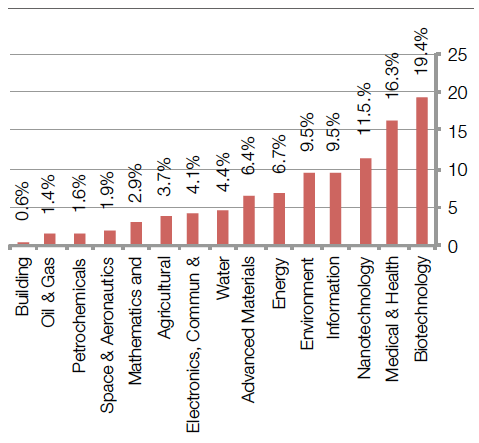
Functions of Management
Planning
The university has a strategic plan to develop new programs in different areas of study and specialization to exploit existing opportunities and new opportunities, which come with new challenges in the global academic and Business Environment (PMU, 2014). The strategic plan is to exploit new opportunities and distinguish the university from other universities in Saudi Arabia by offering courses in English in different disciplines and colleges, which include the College of Engineering (courses in mechanical, civil, electrical, interior design, and information technology). Other strategic areas where the university is offering courses in English, which is serving as distinguishing mark include the College of Business Administration (for males and females in Accounting, Business administration, and Management Information systems) and in the College of Arts and Sciences (PMU, 2014)
Organizing
Organizing is one of the strategic management functions, which the university has embraced as a strategic tool to introduce the new programs in English (Freeman, 2010). To make the strategic program competitive, the university endeavors to align the strategic objectives with the long-term and short-term expansion plans by determining the external opportunities and threats, the internal strengths and weaknesses of the university and the long term objectives (Freeman, 2010). Internal strengths include teaching courses in English, offering a wide variety of courses, using the most modern facilities and technologies (labs, internet) for learning sessions, and establishing an open culture for students from other parts of the world. The threats include upcoming universities offering course in English for male and female students.
Motivating
Motivation is one of the strategic elements, which organisation use to improve the performance of their staff and gradually the performance of the university in various programs. The university offers scholarships, unique programs to suit student needs, part time courses, work study programs, and uses motivation as one of the strategic management tools in to implement the new programs in English by offering financial support and aid to the staff and students, when they conduct their research and for attending conferences (Hamdan, 2005).
Staffing
The university has a policy of employing highly qualified personnel from different nationalities and countries to contribute their knowledge to the various schools and courses being offered in the university (Hamdan, 2005). In addition, the university has a competent human resource department which is responsible for the recruitment and hiring qualified personnel through job advertisements and interviews. Interviews are conducted using the most modern technology and facilities such as Skype.
Controlling
The university recognizes the use and competence in English as a medium of communication and as a key element of strategic growth and competitiveness. Most universities in the region do not offer academic programs in good quality English (PMU, 2014). Lecturers have to show a high degree of competence in the language and in their area of specialization and any lecturer found incompetent is dismissed from duty. The compliance standard embraced by the university is ISO 2010, which is evident in the expansion strategy, which is based on the key concepts of the strategy development process (Hamdan, 2005). The strategy development process is a concept defined by the three key components, which include strategy formulation, implementation, and evaluation. The university has a quality control program consisting of a feedback, evaluation, and reporting mechanisms for effective strategy development (Freeman, 2010).
External Environment Assessment
Economic Forces
Statistical evidence on the economic trend in Saudi Arabia shows that the economy depends on revenue from petroleum and tourism. In its strategic approach to introducing new programs and expanding existing programs, the university has researched and understands the sources of revenue for the citizens who are critical in providing financial support for their family members who enroll for programs in the university (Al Fahad, 2000). Here, it is critical to note that the university recognizes the value of tourism as an additional source of revenue for the economy because tourists come from different parts of the world to visit the famous Islamic sites. The private sector provides 40% of the GDP of the economy comes from the private sector, which include the petroleum industry, which contributes 45% of the GDP, which is 90% of the export earnings of the country.
When compared with other Gulf States, the country has the strongest economy in the Middle East (Prince Mohammad Bin Fahd University, 2010). The country has strategically developed economic cities for the purpose of spurring industrialization to attract talented professionals to participate in the growth of the economy for the country. Industrialization has brought numerous opportunities for tertiary institutions and has attracted a significant share of the government’s investments in educational programs. The government of Saudi Arabia contributes 25% of its budgetary allocations to the education sector and actively participates in the development of research centers.
On the other hand, the country has made significant investments in other levels of the education sector and has initiated a number of the universities such as the King Abdullah University of Science and Technology (KAUST), which has a capacity of over 13,000 students. The following graph shows the statistical figures as per the contributions of the GDP of the economy by industry in 2011 (Prince Mohammad Bin Fahd University, 2010).

Political, Legal, and Regulatory Forces
The government of Saudi Arabia is governed under the Sharia Law, which in not codified as most democratic countries have done. Sharia Law is the supreme law of the land and each person has to comply with the Sharia law, irrespective of their position of authority. The ultimate source of the law of the land is the Holy Quran, which is referenced in any matter of the law. The king is entitled to issue decrees when certain situations dictate so. It is critical to note that the university has tailored its objectives and aligned them to the Sharia law, government policies, and the strategic process of developing and expanding new programs, which are taught in English (Al-Mubaraki, 2011).
Cultural, Social, Demographic Forces
The cultural, social, and demographic trends in Saudi are shown in the graph below. It is estimated that 20% of the people in Saudi Arabia are foreigners and the rest of 80% are Saudi Arabian nationals. It is estimated that the population of Saudi Arabia was 29 million by 2013 and is projected to rise to a new higher level in the coming years. The expected increase in the population is caused by low death rates and high birth rates. It is hoped that by 2015, the population of the country could be over 30.39 million, which is expected to increase at a rate of 4.1 % per annum (Prince Mohammad Bin Fahd University, 2010).
The majority of the Saudi Arabian population is Afro-Arabs and 25% of the population below 25 years old speaks Arabic. The country has experienced a situation known as the youth bulge because of the drastic increase in the number of write about trends in the Saudi culture, society, and demographics (statistics), by the year 2006 are shown in the graph below.
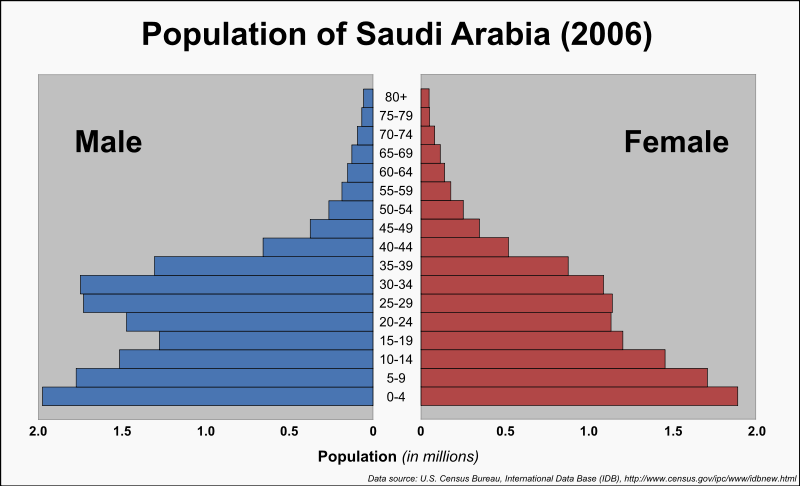
Estimate shows that Saudi Arabian population who are based in the Sunni culture and traditions which are characterized by a strict dress code and public behavior is increasing drastically. The culture is enforced by the law of the land and is widely accepted in the society and recognised in law and binding to the citizens of the land. Following table provides the demographic trend of the population of Saud Arabia.
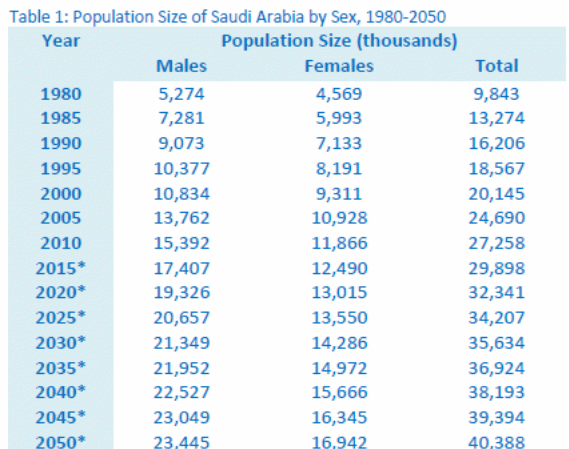
Natural Environmental Forces
The geography of Saudi Arabia shows that the country is bounded by seven countries and has three bodies of water, which link the country to the sea and to the international waters (Prince Mohammad Bin Fahd University, 2010).
The following map shows the position of Saudi Arabia as one f the countries in the Middle East, which is bounded by other Arab-speaking countries.
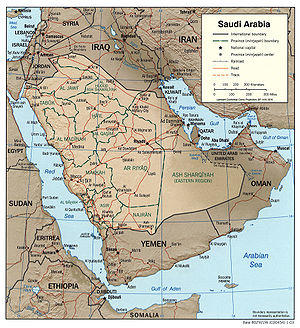
Saudi Arabian terrain is defined by fairly harsh and barren flat plains, which consist of salt flats, sand deserts, and anomie of manmade lakes which do not have permanent water channels which lead into he lakes. The country is also home to the largest sand desert in the world, which of one of the tourist attractions in the country.
Day time temperatures reach hundred degrees Fahrenheit, with humidity at the coastal region reaching 100 percent. Winter temperatures can reach below freezing point in the northern and central regions of the country. In addition, the country acquires very little rainfall in most parts, making country to have a desert or semi-desert climate.
Technology Forces
The country is experiencing a technological boom just like any other country in the world. Most people have bought and possess modern look mobile phones and computers such as laptops. The country has experienced rapid growth and use of new devices and there is a growing need for the educated professionals in Saudi Arabia to become innovative and embrace new technologies (Prince Mohammad Bin Fahd University, 2010). One of the most critical challenges is that most of the content posted in the internet is in Arabic, which limits the number of people who read the content, adding to the need for the university to adopt the use of English as a medium of communication.
Competitive Forces
There are a number of other universities, which are coming up in Saudi Arabia offering the courses being offered by the university. In addition, because the universities have realized the potential opportunities and demand for higher education in the country, they have developed innovative ways of attracting students, such as offering new courses in English to attract English-speaking students. The major competing universities (KFUPM, Sultan University, King Faisal University, and Dammam University, and statistical evidence shows an increasing number of students getting register at the universities (Prince Mohammad Bin Fahd University, 2010).
SWOT Analysis
The university has its strengths, weaknesses, opportunities, and threats. When put it the correct perspective, the university has strategized to embark on an expansion of existing program and to offer new programs in English, which is a strategic strength of the university (Lee, Lo, Leung & Ko, 2000). One of the distinguishing weaknesses with universities in Saudi Arabia is that they offer their courses in Arabic, which is a limiting factor for most students who want to register and study in those universities from other parts of the world. Expanding the programs on offer will provide students from different parts of the world with a wide selection of disciplines.
The weaknesses discovered with the university to include few publications and research papers, its failure to acknowledge different systems of beliefs as part of an inventive to attract qualified talents from different religious backgrounds. Religion is one of the critical problems, which influences the way people from different cultural and religious backgrounds interact. Such an approach provides the university with another competitive advantage over the other universities in Saudi Arabia (Lee et al., 2000).
It has been established that the university can gain from contributions made by different academicians in different knowledge areas because they are able to share and communicate new ideas in English. Another critical element is that the courses are offered in English for women, who could equally gain from the opportunities to share their experiences and knowledge with their peers from other parts of the world. It is difficult for female students to find a university offering their programs in English as the PMU does in Saudi Arabia (PMU 2010).
The Strategy
To overcome the challenges associated with the rising number of universities competing with PMU, which offer new courses and eye the new opportunities in higher education, Prince Muhammad bin Fahd University (PMU) is a Saudi Arabia has developed a strategy to beat the competitors based on the strategic management concepts (Al-Mubaraki, 2011). The strategy was formulated to improve the university’s performance in offering new courses and in the expansion of already existing courses, which the university intends to offer in English. The main competence of the strategy is that most universities, which are competitors of Prince Muhammad bin Fahd University (PMU) is a Saudi Arabia offer their courses in Arabic and have not diversified their programs to include women (Al Fahad, 2000). A critical analysis of the situation shows that the most suitable strategy to improve the performance of the university is based on “program expansion”. Program expansion deals with increasing the number of courses being offered to include women and to offer the courses in English, as a strategic tool to be competitive in the academic arena.
Description of the Strategy
The strategy is to provide new courses and offer them in English and expand existing programs to enhance the performance of the university to ensure that the university becomes a center of learning of global excellence in academic and professional development in Saudi Arabia (Al-Mubaraki, 2011). The university will provide students from various parts of the country and the world the new courses in English to allow the university to belong to the family of other universities which have international reputation in innovation, technology, research, and development (Al-Mubaraki, 2011).
Rationale for Picking This Strategy
The rationale for choosing the strategy is based on the argument that when the courses are limited and offered in Arabic only, the students and instructors do not find a forum to exchange ideas and receive contributions from other academician and researchers in different disciplines on innovation and the creation of new ideas, which could significantly contribute to the development of the country and the university in research, innovation, and development (Al-Mubaraki, 2011).
On the other hand, by increasing or expanding the program being offered by the university in English, it will make the university to open its gates to the world and could enable many talented minds and professionals from different parts of the world to contribute their skills and knowledge to the pool of already existing knowledge in the university. In addition to that, the university could gain by hiring highly qualified and skilled human resource personnel such as professors who have a lot of experience in research and innovation in diverse disciplines (Al-Mubaraki, 2011). The university is bound to make the country of Saudi Arabia to gain from foreign earnings which is brought in by foreigners working and visiting the country and an additional source of revenue to the coffers of the country as a result of the exchanges with other foreign currencies.
The Feasibility/Viability and Possibility of This Strategy
The feasibility o the strategy being implementation successfully is based on various factors. One of the factors which supports the implementation of the strategy is the competitive advantage of the university in terms of the availability of the required personnel to fulfill the implementation of the program (Al-Mubaraki, 2011). It has been shown that the university has already hired some of the top-notch academicians from different parts of the world who have demonstrated a high level of competence and contributions to the development of solutions to problems which affect society. Such solutions have also provided the people and the host institutions they have worked for, with competitive advantage over a number of higher learning institutions. Communication will be the key element that will be used to implement the strategy and a number of benefits are bound to be experienced by implementing the strategy.
Improvements in Other Universities That Have Adopted This Strategy
Other universities have used the strategy to improve by factoring international issues which affect academic programs, which include the complex variables such as cultural, legal, technological, social, and competitive opportunities and threats, and aligning the strategy to solve the issues to achieve their academic objectives. In addition to that, the universities have factored the principles of conduct within their institutions to guide decision-making. The universities have a code of ethics, which guides the behavior of the students and the staff in their day to day activities (Al Fahad, 2000).
Drawbacks in Other Universities That Have Adopted This Strategy
The problem with the universities is that they fail to provide open access to their research publications and databases. The resources are usually limited to the students who belong to the universities and access is limited to students want to access the resources online. In addition to that, most of the academic material has not been digitalized (Horn, 2008).
What Benefits Can Be Earned From This Strategy?
It is important to note that when the university has completed expanding its programs to accommodate women and students from different cultural and ethnic backgrounds, the university will gain by embracing cultural exchanges because new and foreign students are able to mingle with other students who come from within Saudi Arabia. In addition, by offering the new courses in English and expanding on the existing courses, there could be enhanced communication and sharing of new and innovative ideas about the new unexplored areas if research and development, the environment could encourage dialogue and participation in various research projects, particularly between students and experienced and skilled professors in their areas of specialization (Al Fahad, 2000).
The students conducting research in the new courses being offered in English will be able to understand what other universities are doing in different disciplines to enable them make the best decisions on the path to follow to become more competent and improve the performance of the students. The university will be able to understand why other universities develop and continuously enhance their programs and how they do it, to enable the university adopt and develop new and academic better standards (Al Fahad, 2000).
Another strategic benefit includes the use of university resources for greater commitment in doing research and development. In addition, the management of the university will learn n new method of handling people from different cultural backgrounds, enable the management to understand what other universities are doing, reduce resistance to change, provide the management with the ability to learn and enhance problem-solving strategies, and provide the management with a clear understanding of the relationship between performance, rewards and success (Al Fahad, 2000).
Implementation of Strategy
Research has shown that the university can use a number of approaches to implement the strategy for program expansion and the delivery of instructions in English which is a medium of communication. The underpinning elements of the strategy are defined by the procedures the university has in place to address the needs of the students and include using the best practices for employee recruitment. Those practices include using Skype and other online sources based on the best human resource recruitment policies (Alam, 2007). In addition to that, the recruitment process is conducted using online adverts based on the needs for the employee.
The university targets some of the well-qualified personnel who have a rich experience working in different universities of the world so that they can contribute their knowledge and skills to the development of the students’ innovative skills in their lines of discipline. Each faculty has an in-house training for their staff to enhance their skills in different areas and in new and emerging technologies to make the university a center of academic excellence and innovation (Al Fahad, 2000). The university ensures that the employee working in different departments are trainee and retrained through a number of strategies. The strategies include job rotation, employee integration, work task analysis, and work standard determination to identify the best talent to suit a particular job.
The university has a program for marketing the new programs, which are offered in English to a wide audience of people and uses the internet, which provides a platform for different students and parents to access real time information on the programs on offer. In addition to that, the web based applications is flexible and interactive and offers the students with the capabilities and flexibility to apply online without using the normal and slow postal services and the responses are faster and real-time (Al Fahad, 2000).
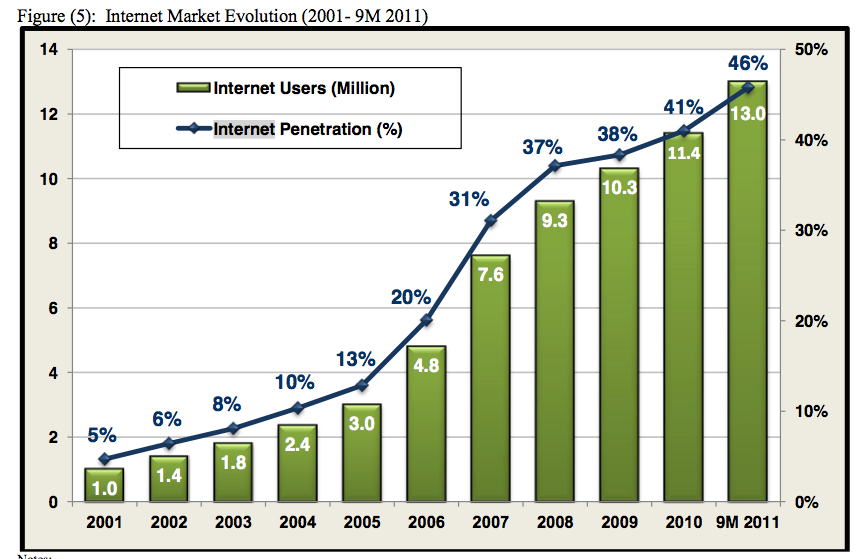
Collaboration with other universities is an important element, which the university should factor as a tool to gain competitive advantage over other universities in Saudi Arabia. Collaboration is important because the university is able to share ideas with other universities in matters of innovation, research and development, and other exchange programs (Al Fahad, 2000). Research has shown that those students who want to transfer from other universities to the university are barred because the university lacks a credit transfer program. To attract such students, the university should establish a credit transfer program, in all faculties and at any stage of the academic lifecycle of the student to allow them register in the university.
Other area of important are in technology development, which targets technologies which are imported from other counties and, which contribute to the growth of the economy, especially the oil and gas industry and other new and emerging industries. Other methods include is to invite academicians and students to make international presentations on new innovations and discoveries in their areas of specialization, which is a good approach of giving students the best opportunities learn about the university. The strategy provides the university with the opportunity to allow international students to explore new academic opportunities and programs, which are unique to the university. It is important for the management to strategise on the best methods to make the university and international institution of higher learning.
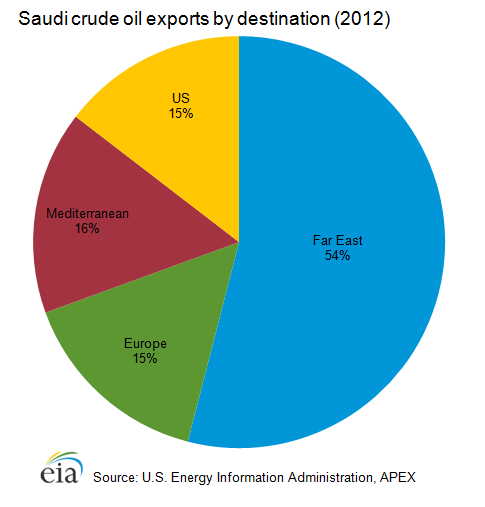
Reviewing, Evaluating, and Controlling the Strategy
Some of the strategic approaches used by the university to implement the new programs and offer other programs in English for women have shown a significant number of issues. Those issues include cultural and ethical, religious, and language barriers, as the outcome of internal reviews. To address the language issues, it is recommended that the university integrates the use of English as a medium of instruction to enable students with different backgrounds to register and take studies in the university. The underpinning concept is internal reviews to control the program implementation strategy. In addition to that, it is important for the university to conduct external reviews, which have revealed a number of issues including competition from other local universities. Local universities have recognized the need to introduce different courses, which accommodate students from different religious and cultural backgrounds.
Once the program is fully implemented, an evaluation strategy to assess the effectiveness of the program will include putting performance measurement measures based on a feedback mechanism which provided the management with information about the performance of different departments towards the strategy. It is important to integrate intuition and analysis based on past analysis, feelings, and judgment to successfully implement the strategy.
To maintain the strategy, it is important to ensure that management has a program in place to continuously monitor the internal and external environments for trends and events such as change in technology, the global economic environment, the changes in demand for certain courses, and emerging trends in innovation, research and development to align the strategy to the new changes, opportunities and challenges, and the program will be successful.
Conclusion
In conclusion, the motivating factor underpinning the study was to develop a programs expansion strategy for Prince Mohammad University (PMU) to address the need to expand and offer new programs in English for male and female students. The aim of implementing the strategy is to provide the institution with a strategic advantage over the local universities and make it strategically positioned to offer high-quality university education. To achieve the program expansion objective, this study focused on developing a program implementation approach based on all the stages of strategy development by aligning the strategy development process with the mission and vision statements of the university.
The most important approach was to gather, analyse, and organise the necessary information on Prince Mohammad University (PMU), competitors, and the other issues which are necessary for the implementation process. It was established that the owner of the university is Prince Mohammad. The university has other stakeholders who include students, lecturers, and support staff. The university has the state of the art facilities, a number of running programs, which include engineering, Information Technology, Bachelor of Arts, among others. There is statistical evidence to show that the mother country, Saudi Arabia has a very high GDPA and has diversified its economic and industrial activities to suit the current economic environment.
A synthesis of the strategy development process shows that the university needs to address certain weaknesses to successfully expand and implement the program based on English as medium of communication for the learning sessions for male and female students. The areas for the university to focus on include cultivating an environment to accommodate students who come from different cultural backgrounds.
References
Alam, A. A. (2007). Public opinion on organ donation in Saudi Arabia. Saudi Journal of Kidney Diseases and Transplantation, 18(1), 54. Web.
Al-Ayed, I. H., & Sheik, S. A. (2008). Assessment of the educational environment at the College of Medicine of King Saud University, Riyadh. Eastern Mediterranean Health Journal, 14(4), 3-30. Web.
Al Fahad, A. H. (2000). Prince, the Shaykh–And the Lawyer, The Case W. Res. Journal of International Law, 32 (1), 307. Web.
Al-Mubaraki, A. A. S. (2011). National and Global Challenges to Higher Education in Saudi Arabia. Current Development and Future Strategies In Higher Education in the Asia-Pacific, 1(1), 413-430. Web.
Freeman, R. E. (2010). Strategic management: A stakeholder approach. New York: Cambridge University Press. Web.
Hamdan, A. (2010). E-Learning and teaching: The need for clear pedagogy. Transformative learning and online education: Aesthetics, dimensions and concepts, 2(1), 111-126. Web.
Hamdan, A. (2005). Women and education in Saudi Arabia: Challenges and achievements. International Education Journal, 6(1), 42-64. Web.
Hertog, S. (2011). Princes, Brokers, and Bureaucrats: Oil and the State in Saudi Arabia. New York: Cornell University Press. Web.
Horn, J. (2008). Enabling university excellence through a human resource strategy. Higher Education in the Twenty-First Century, 2(1), 107. Web.
Lee, S. F., Lo, K. K., Leung, R. F., & Ko, A. S. O. (2000). Strategy formulation framework for vocational education: integrating SWOT analysis, balanced scorecard, QFD methodology and MBNQA education criteria. Managerial Auditing Journal, 15(8), 407-423. Web.
PMU: Prince Mohammad Bin Fahd University (2014). Web.
Prince Mohammad Bin Fahd University. (2010). Web.